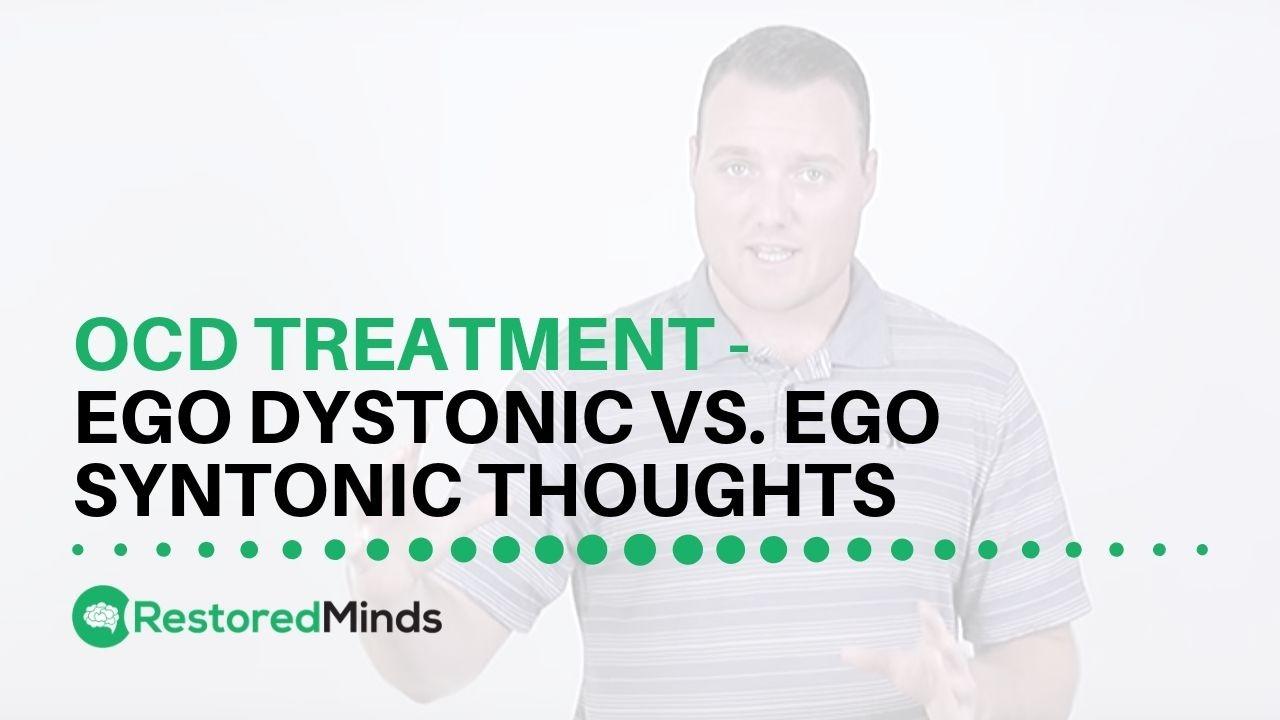Ego Dystonic Thoughts
Jul 17, 2017
Understanding Ego-Dystonic vs. Ego-Syntonic Thoughts in OCD Treatment
In this episode, we explore a fundamental concept in OCD treatment: Ego-Dystonic vs. Ego-Syntonic Thoughts.
What is the Ego?
Before diving into the specifics, it’s important to understand the concept of the ego. In psychological terminology, the ego represents our self-concept – the sense of who we are, including our values, beliefs, and perceptions of ourselves.
Defining Ego-Dystonic Thoughts
Ego-dystonic thoughts are those that do not align with an individual's self-concept. Essentially, these thoughts feel foreign or intrusive, causing significant distress because they are inconsistent with the person’s values and beliefs. For instance, someone who values honesty might experience anxiety if they have a spontaneous thought about stealing.
Example of Ego-Dystonic Thoughts
A practical example would be:
-
Walking down the street and seeing a purse on a bench.
-
Having a thought that pops into your head, such as, "What if I snatched that purse and ran away with it?"
If you don't identify as a person who would commit theft, this thought does not align with your self-image. It's this misalignment that creates discomfort and is a strong indicator of ego-dystonic thoughts, which are commonly experienced by individuals with OCD.
Defining Ego-Syntonic Thoughts
On the other hand, ego-syntonic thoughts are consistent with the person’s self-concept. These thoughts occur naturally and do not cause distress because they align with the person's values, beliefs, and identity. For example, someone who has no qualms about dishonest behavior and who acts impulsively might find thoughts about stealing congruent with their self-perception.
Example of Ego-Syntonic Thoughts
An example could be:
-
The same scenario of seeing the purse on the bench.
-
This time, the individual thinks about taking it and does not feel discomfort because stealing aligns with their character and past behavior.
Why Does This Matter in OCD Treatment?
Understanding whether thoughts are ego-dystonic or ego-syntonic is crucial in OCD treatment. When individuals with OCD experience distressing thoughts, it’s often because these thoughts are ego-dystonic. The significant anxiety and discomfort these thoughts cause can signify that the thoughts are not representative of the person's true self.
Distinguishing Harmful Thoughts
It's important to distinguish between different reactions to harmful thoughts. For instance, if harmful thoughts do not cause distress and the person remains unemotional or indifferent, there might be a cause for concern that needs addressing in a different way.
Conversely, if such thoughts generate intense anxiety and fear, it's often an indication that the thoughts are ego-dystonic and associated with OCD. This distinction helps in tailoring the appropriate treatment approach for OCD.
Seeking Help
If you or a loved one are experiencing distressing thoughts and are unsure about their nature, it is essential to seek professional advice to better understand and address the issue properly. OCD is a treatable condition, and understanding the nature of these thoughts can be the first step towards effective treatment.
Additional Resources
For more in-depth information about OCD treatment and resources, please visit our website at www.restoredminds.com. We offer a comprehensive suite of tools and guidance aimed at helping individuals navigate their mental health journey.


